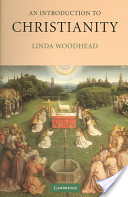Three main points underscore the unity that American Protestantism enjoyed into the early part of the twentieth century.
- Protestants shared a voluntaristic approach that viewed religion as a matter of individual free choice thus it was able to tolerate the co-existence of different Protestant churches and the differences between these churches since they all willingly embraced the greatest American accomplishment in freedom–the separation of church and state. A symptom of this stance was that the church began withdrawing from the public square in favor of investing its effort into the private, domestic circle. This stance led large parts of the church to embrace particular concerns about the morals of the individual, the relationship between the sexes and the overall welfare of the nuclear family. In the words of scholar Linda Woodhead, “Increasingly, Protestantism became a religion of ‘the family’” (An Introduction to Christianity, 257).
- Protestants shared a growing optimism about human choice and ability, which eventually led to the acute problem of “rugged Christian individualism,” a problem that we now equate with America in general. It was assumed, when this line of thinking began to be widely accepted, that each person was free to resist and to embrace divine grace, and this choice would be reflected in individual actions. Individuals were responsible for their own salvation and the church would have less and less to do in this matter. Some came to believe, later in the nineteenth century, that righteous human activity could hasten the kingdom of God on earth. This led to an expression of public faith through an American brand of humanistic postmillennialism, a belief “that a truly Christian society was being prepared in the USA, fit for the coming of Christ” (An Introduction to Christianity, 258).
- Protestant churches had a profound willingness to identify “Christian (which meant Protestant) civilization” with “Western civilization.” More broadly this was identified with the American experiment and our relationship with divine providence. In America Protestant churches were much more willing by the late nineteenth century to sanction the nation and its social, political and economic ideas and practices as God-ordained. Above all else these churches, and their leaders, were willing to identify their religion with the values of liberty, democracy and progress. The effect of this was to support the interests of white, male Anglo-Saxon middle classes. (Social concerns for the poor were still an important feature of this type of Protestantism.) The widespread belief was that Protestantism had pushed Western civilization to the place where its superiority was now a great blessing to the whole world.
Given these religious and social realities the growing division between evangelical and liberal Protestantism “amounted to no more than a slight difference in doctrinal emphasis” in the nineteenth century (An Introduction to Christianity, 258). Evangelicals put more stress on human sinfulness and liberals on human goodness. Liberals would stress the ability of human reason while evangelicals would stress the need for particular revelation through the Scripture. This “center” would not hold by the end of the century but it did for some decades. The conclusion I have reached is stated quite eloquently in Linda Woodhead’s sweeping conclusion:
Structurally, both liberalism and evangelicalism were pan-denominational ideological movements that were not exclusively associated with any particular form of Christian denomination and did not give rise to a distinctive new form of ecclesiastical institution. Yet evangelicalism had a natural and genealogical affinity with the non-voluntarist biblicism and the free churches, while liberalism had an affinity with the non-voluntaristic historic churches on the one hand and with voluntarist spiritualism on the other. Such differences help to explain why liberalism could arise in both Catholic and Protestant Christianity, but evangelicalism could never take a Catholic form (An Introduction to Christianity, 259).
Liberalism has been variously understood, and profoundly misunderstood, by many students of American Christianity. (Among ordinary Christians who are not scholars it is rarely understood well.) Though liberalism was a movement decisively shaped by the rising modern social context its emphasis on free will and personal responsibility, joined with its positive estimation of human dignity (humanism), was as old as Christianity itself, at least as old as one profound expression of it. What likely makes modern social gospel liberalism unique is that it wanted to “reform” the church and society not by returning to earlier Christian sources but rather by aligning itself with reason, progress and enlightenment in opposition to “superstition” and the strongly supernatural aspects of the Christian faith. This is why Christian liberalism took many different forms, some more clearly secular and some quite plainly Christian. In Europe liberalism in the church took a more militant form thus it more quickly and naturally embraced secularism. In America it tended to be less militant, at least initially. The militancy would come in the early twentieth century when leading voices on two sides of a growing divide began to turn up the volume in an ecclesial context that led to ever growing divisions and, ultimately, to separations in Protestant churches. Now most of us are, in one way or the other, the direct descendants of tragic, even multiple, ecclesial divorces. This created an intense fear and loathing that marked a large part of the last seventy-five years of church life in America. This fear and loathing now seems totally irrelevant to younger Christians in the millennial generation. It is helpful, however, if we all understand where we came from in order to gain a bigger and clearer picture of where we might be going now as Christendom collapses in modern America.
Related Posts
Comments
Comments are closed.
My Latest Book!

Use Promo code UNITY for 40% discount!







John, I have liked each of these three posts, but this one really “has the goods”, as they say. I am seeing now how this relates to your vision of “missional-ecumenism” rooted in the Great Tradition–you are showing how we got away from a missional vision and how we got so divided and detached from the Tradition. Great stuff.
Greg, you nailed it. Missional-ecumenism can become a reality (perhaps only) if we understand the social and religious context of how we developed our unique forms of Christendom culture and why this pattern of thinking and living is both biblical and the way out and forward.
Denise Murphy Plichta liked this on Facebook.
Nick Morgan liked this on Facebook.